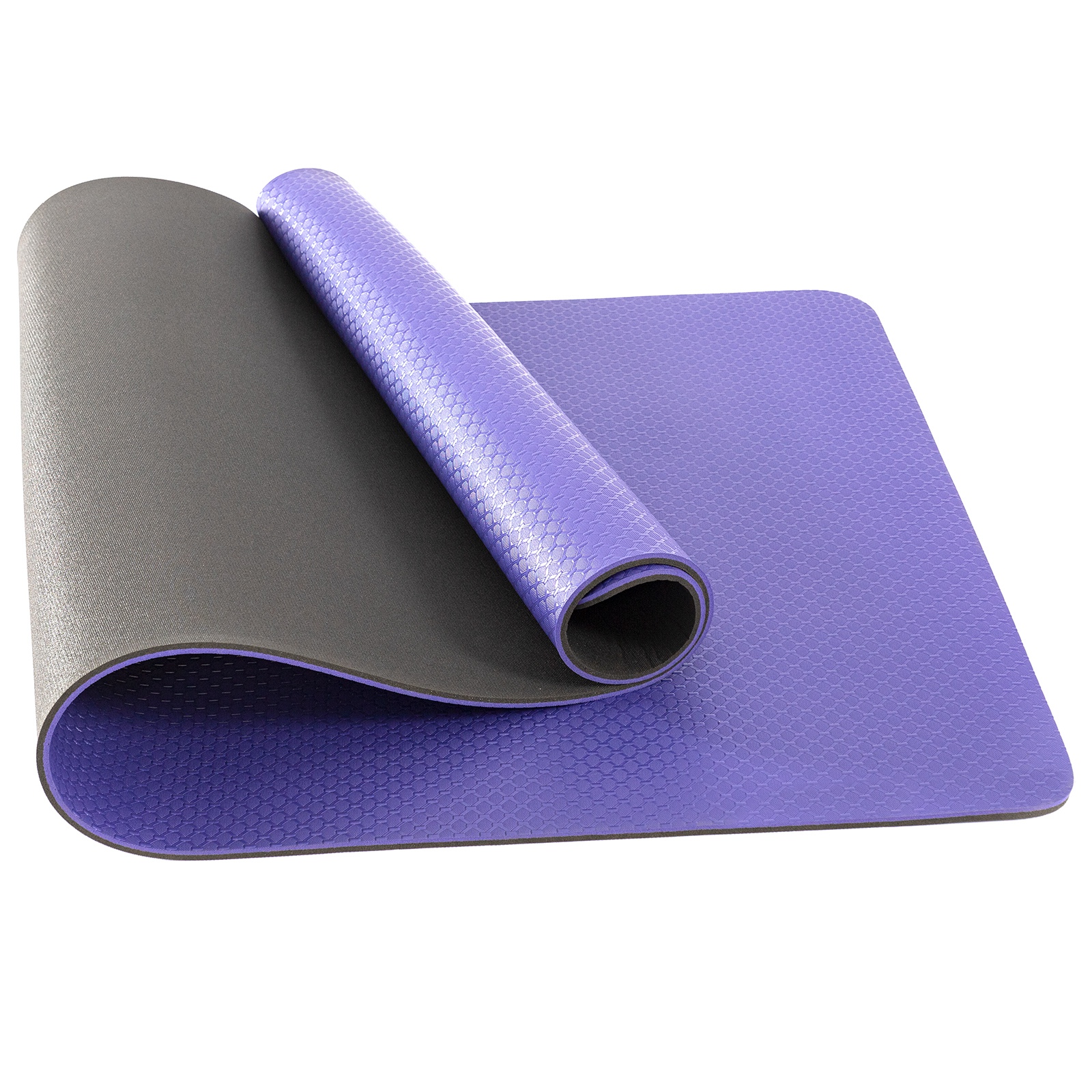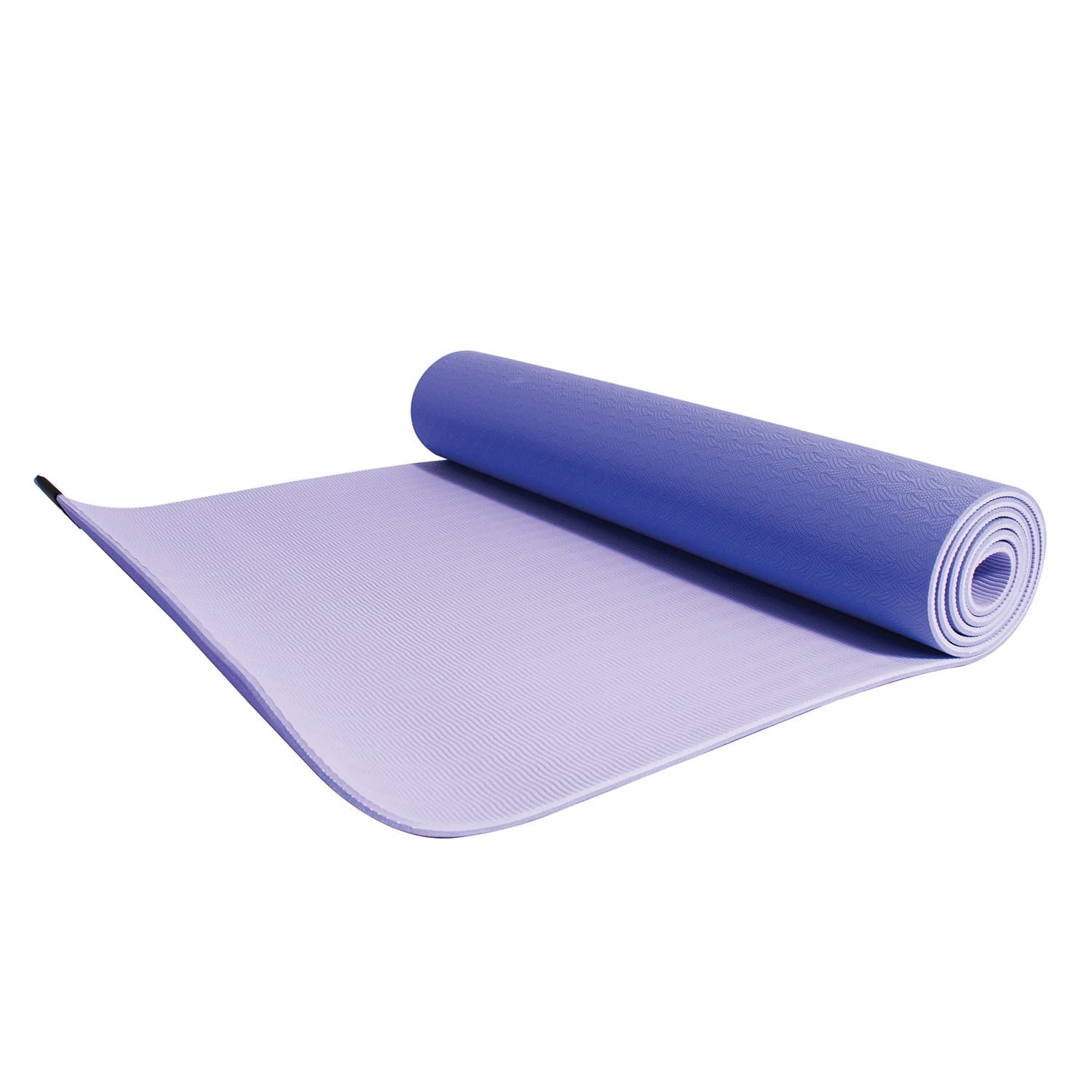How often should you replace your yoga mat? Yoga is a popular form of exercise that has been practiced for centuries. It focuses on strength, flexibility, and relaxation, and is often performed on a yoga mat. As with any exercise equipment, yoga mats experience wear and tear over time. This leads to the question: how often should you replace your yoga mat?

Understanding the Lifespan of a Yoga Mat
The lifespan of a yoga mat can vary depending on several factors, including the material it is made of, how often it is used, and how it is cared for. Most yoga mats are made of PVC, rubber, or a combination of these materials. PVC mats tend to be more durable and can last for several years, while rubber mats may wear out more quickly. Additionally, the frequency of use and the intensity of your yoga practice can impact the lifespan of your mat. For example, if you practice yoga every day or participate in hot yoga, your mat may wear out faster than if you only practice occasionally.
Signs That It’s Time for a Replacement
There are several indications that your yoga mat may need to be replaced. One of the most obvious signs is visible wear and tear. This can include peeling, flaking, or cracking of the mat’s surface, as well as fraying around the edges. Another indicator is a loss of grip. Over time, the surface of a yoga mat can become smooth and slippery, making it difficult to maintain stability during your practice. Finally, if your mat has a strong odor that persists despite regular cleaning, it may be time for a replacement.
Hygiene Considerations
In addition to wear and tear, hygiene is an important factor to consider when determining the lifespan of your yoga mat. Sweat, dirt, and bacteria can build up on the surface of your mat, making it unhygienic to practice on. While regular cleaning can help to alleviate these issues, there may come a point where it is more practical to replace your mat rather than trying to clean it. This is especially true if you practice hot yoga, as the heat and humidity can create an environment that is conducive to bacterial growth.
Guidelines for Replacing Your Yoga Mat
So, how often should you replace your yoga mat? While there is no hard and fast rule, a good guideline to follow is to consider the frequency and intensity of your practice, as well as the condition of your mat. If you practice yoga several times a week and notice visible wear and tear, loss of grip, or persistent odors, it may be time to invest in a new mat. On the other hand, if you practice yoga infrequently and your mat still looks and feels like new, you may be able to extend its lifespan.

Considerations for replacing your yoga mat
Yoga is a form of exercise that combines physical postures, breathing techniques, and meditation to promote physical, mental, and spiritual well-being. One of the key accessories for practicing yoga is a yoga mat. A yoga mat provides a cushioned and non-slip surface for practitioners to perform various poses and stretches without slipping or causing strain on the joints. However, there are certain things to note when using your yoga mat to ensure a safe and effective practice.
Choosing the Right Yoga Mat
Before diving into the things to note when using your yoga mat, it’s important to consider choosing the right yoga mat for your practice. There are different types of yoga mats available, including those made of PVC, rubber, TPE, and natural materials like cotton or jute. Each type of mat has its own benefits and drawbacks, so it’s important to consider factors such as grip, cushioning, eco-friendliness, and durability when selecting a yoga mat that suits your needs.
Cleaning and Maintenance
Once you have selected the right yoga mat, it is important to properly care for and maintain it to ensure its longevity and hygiene. Regular cleaning of your yoga mat is crucial to prevent the buildup of sweat, bacteria, and odors. Depending on the material of your mat, it may require different cleaning methods such as wiping with a damp cloth, using a yoga mat spray, or machine washing. Proper maintenance also includes storing your yoga mat in a clean and dry environment to prevent mold and mildew growth.
Positioning and Alignment
When using your yoga mat. It’s important to pay attention to positioning and alignment to maximize the benefits of your practice and prevent injury. Your yoga mat should be placed on a flat and even surface to provide stability and support during poses and stretches. Additionally, aligning yourself with the center of your mat can help guide your body into proper alignment during poses. And maintain balance throughout your practice.
Grip and Stability
One of the key functions of a yoga mat is to provide a non-slip surface for practitioners to maintain stability and grip during their practice. To ensure that your yoga mat remains slip-resistant, it’s important to practice on a clean and dry surface. Free from any moisture or debris that may compromise its grip. Additionally, some practitioners may choose to use a yoga towel. Or grip aid to enhance the traction of their mat, especially during hot yoga or high-intensity practices.
Comfort and Support
Another important aspect to note when using your yoga mat is the level of comfort and support it provides during your practice. A good yoga mat should offer sufficient cushioning for your joints without compromising stability or balance. Practitioners who require extra support may opt for thicker mats, while those who prioritize portability and stability may choose thinner mats. It’s important to find a balance between comfort and support that suits your individual needs and practice style.

Durability and Longevity
Investing in a high-quality yoga mat is important for its durability and longevity. A durable yoga mat will withstand the wear. And tear of regular use and maintain its original form and function over time. It’s important to choose a yoga mat that is made of strong and resilient materials. And to follow proper care and maintenance guidelines to prolong its lifespan. Additionally, being mindful of the intensity and frequency of your practice can also contribute to the longevity of your yoga mat.
Environmental Impact
In recent years, there has been a growing emphasis on the environmental impact of yoga mats. And the materials used to make them. Many yoga practitioners are choosing eco-friendly options to reduce their carbon footprint. And support sustainable practices. When using your yoga mat, it’s important to consider the environmental impact of its production and disposal. And to explore alternative options such as natural rubber, cork. Or recycled materials that are sustainable and biodegradable.
Conclusion
In conclusion, the lifespan of a yoga mat can vary based on several factors. Including the material it is made of. How often it is used, and how it is cared for. Signs that it may be time to replace your mat include visible wear and tear, loss of grip, and persistent odors. Additionally, hygiene considerations should be taken into account. Especially if you practice hot yoga. Ultimately, the decision to replace your yoga mat should be based on a combination of these factors. As well as your personal preferences and budget. By staying aware of the condition of your mat and following these guidelines. You can ensure that your yoga practice remains safe, comfortable, and hygienic.

